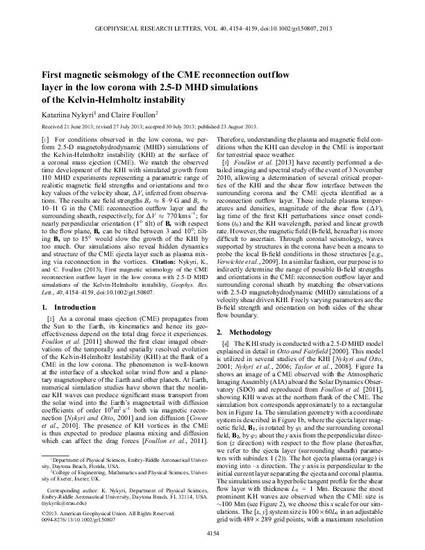
For conditions observed in the low corona, we perform 2.5-D magnetohydrodynamic (MHD) simulations of the Kelvin-Helmholtz instability (KHI) at the surface of a coronal mass ejection (CME). We match the observed time development of the KHI with simulated growth from 110 MHD experiments representing a parametric range of realistic magnetic field strengths and orientations and two key values of the velocity shear, ΔV, inferred from observations. The results are field strengths Be≈ 8–9 G and Bs≈ 10–11 G in the CME reconnection outflow layer and the surrounding sheath, respectively, for ΔV≈770kms−1; for nearly perpendicular orientation (1° tilt) of Bs with respect to the flow plane, Be can be tilted between 3 and 10°; tilting Bs up to 15° would slow the growth of the KHI by too much. Our simulations also reveal hidden dynamics and structure of the CME ejecta layer such as plasma mixing via reconnection in the vortices.
Available at: http://works.bepress.com/heidi-nykyri/7/
